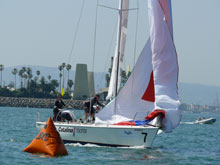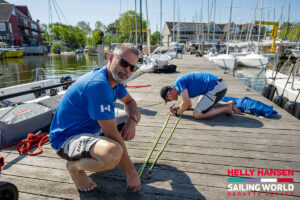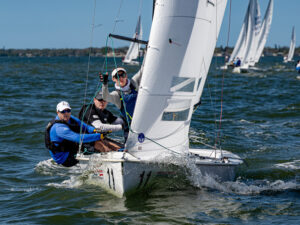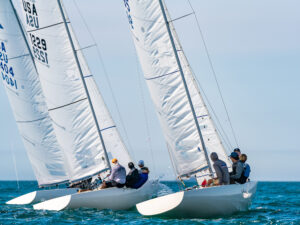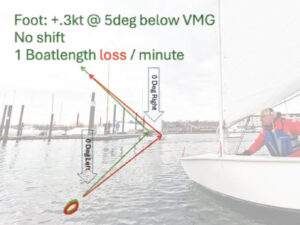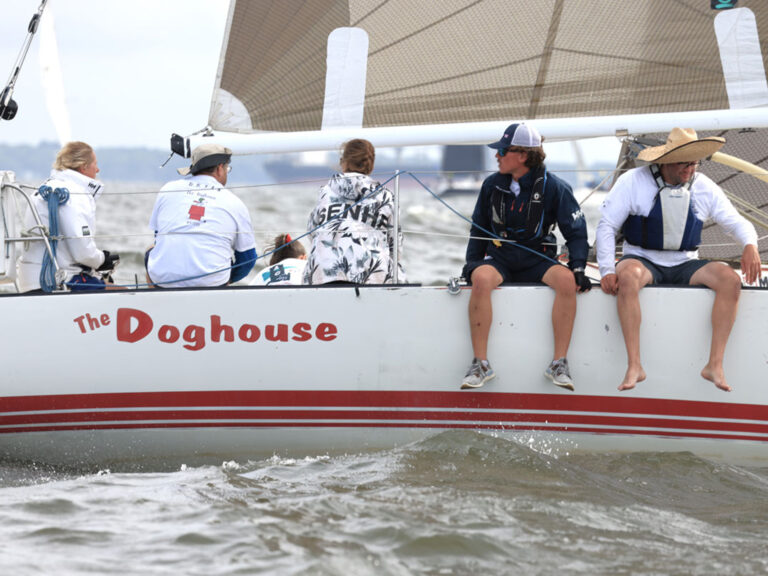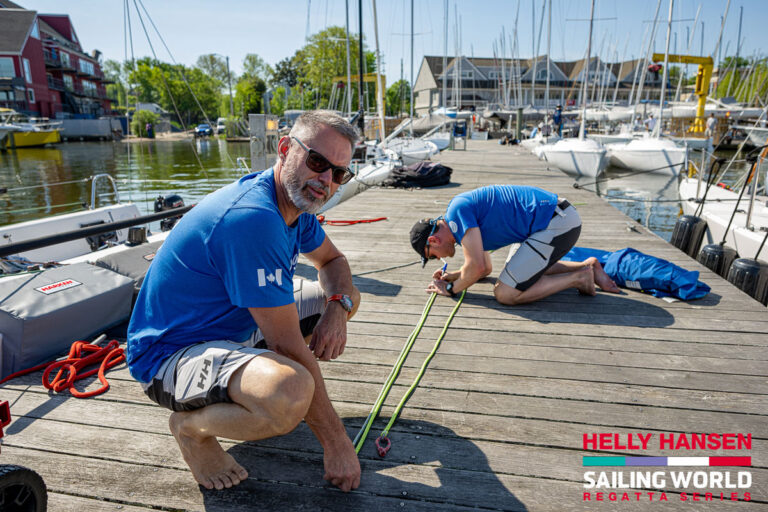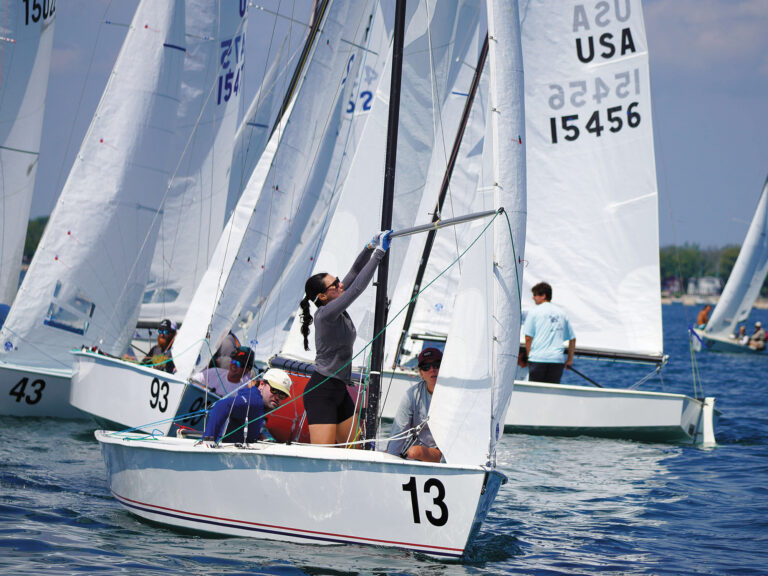The conventional wisdom when it comes to spinnaker takedowns is that the leeward drop is easiest. This may be true for small boats, but on bigger boats, up to about 40 or 45 feet, a windward drop is easier and cleaner. I never like pulling the sail down while on the leeward side of the boat with the genoa in the way. There are also a lot of times when you have no choice since it’s always better to drop the sail on the correct side for the next set. Timing is key with the weather strip and there are a few fine points to perfecting it, but when done right, the spinnaker will come up clean and flying on the next set. To see how a top team gets it done, let’s review a great sequence from the 2009 Congressional Cup, a Grade 1 match-racing event hosted by Long Beach YC in March. Remember, in match racing marks are left to starboard so the spinnaker gear is always set up on the starboard side.
The first step of the weather drop is to get the pole out of the way. Here, Adam Minoprio’s team didn’t have much time on starboard jibe before reaching the mark so they took the pole off in the jibe, stowed it, and then hoisted the genoa. The person acting as the human pole must keep the sail full until the drop. Rod Davis is doing a good job of watching the spinnaker and keeping the clew down while the genoa is hoisted. If the wind was lighter, he could move his position forward to get the clew a little further to windward and away from the headstay.
Now it’s time for the drop. Make sure the lazy genoa sheet is behind the hatch so it doesn’t get pulled down with the sail. The bowman jumps down the front hatch, ready to retrieve the sail. At this point the spinnaker trimmer eases the sheet just enough to collapse the sail. Too much ease could allow the sheet to go under the bow. Notice how Rod pulls the clew aft, inboard, and down to also help collapse the sail and allow the bowman to easily grasp the foot of the spinnaker. The pit person must wait to release the halyard until both guys on the bow have a good handle on the foot.
Once the bowman gets the foot of the sail in hand, it’s time to ease the halyard. The bowman must pull at the middle of the foot, not the clew. This is critical. Note how Rod does a good job of keeping the clew behind the hatch while pulling down on the leech tape of the sail. By always keeping the leech tape in his hands, Rod ensures the sail is going to come out clean at the next set. It’s like packing the sail during the drop. The trimmers need to make sure the leeward sheet and guy are ready to run so the sail can get down the hatch quickly. Once the spinnaker is most of the way down-the bowman is still pulling it down the hatch-the rest of the crew should turn its focus to rounding the mark and sailing the next beat. This drop took place very close to the mark; in light air you can get away with late drops. In stronger winds it’s best to drop earlier so all the guys are on deck for the rounding. With a clean drop you’ll have the entire crew on deck for the whole beat. Having one person down below cleaning up afterwards is slower than having everyone on the rail. A well-executed weather strip like this will get you there.

weather takedown 1 368
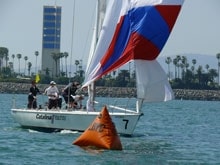
weather takedown 2 220
